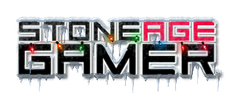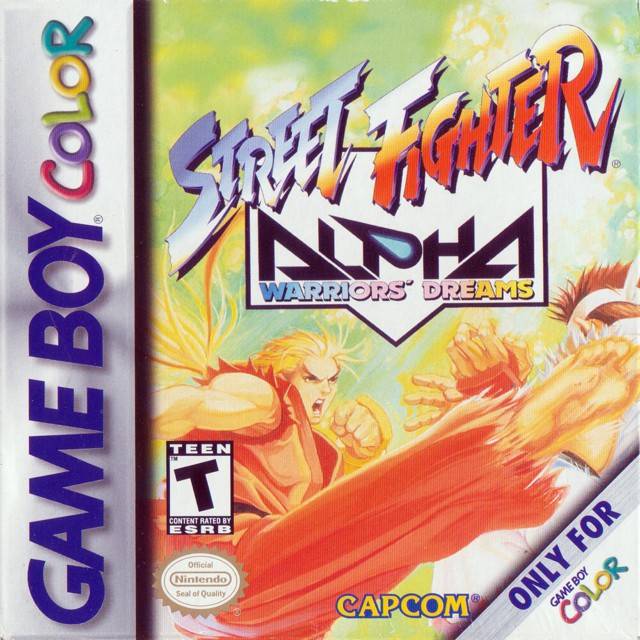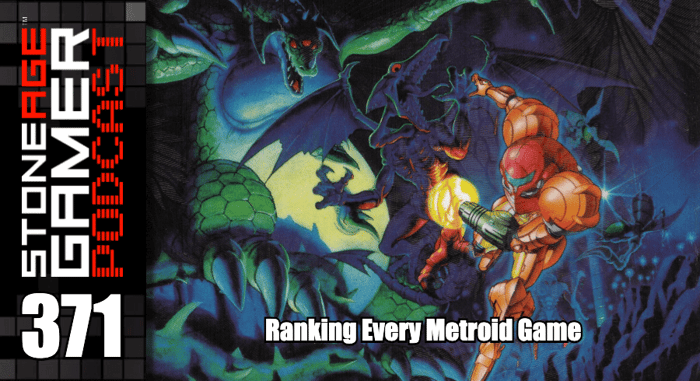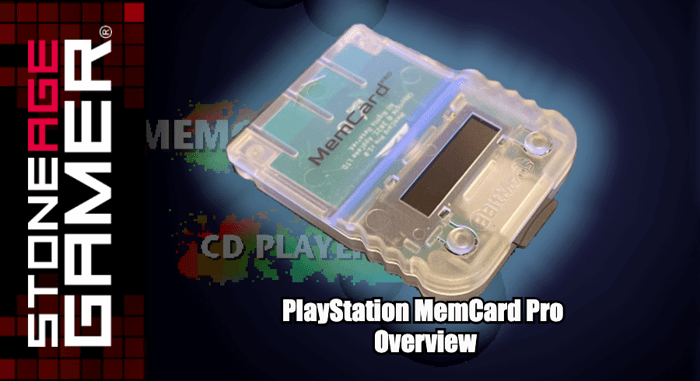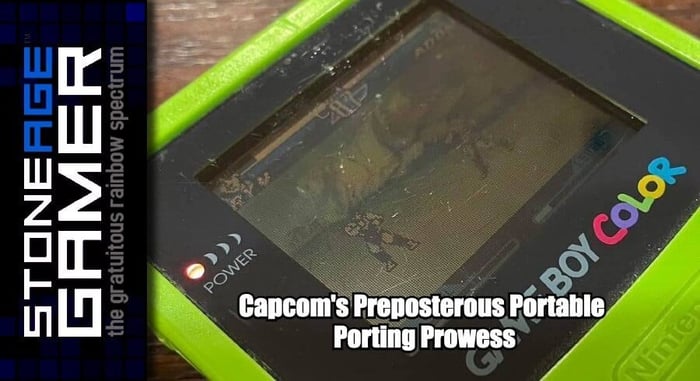
Capcom's Preposterous Portable Porting Prowess
10 lbs of games in a 5 lb cart
One of the coolest things in the world of retro games is when companies take titles that shouldn’t work on specific hardware and somehow bend them to their will. We’ve seen a ton of stuff like this in the homebrew community with games like Donkey Kong VCS for Atari 2600. It’s always exciting to see. Commercially speaking though, some of the coolest feats of porting magic have come from none other than Capcom. Who could forget that time they crammed 2 CDs worth of game into a single Nintendo 64 cartridge in the form of Resident Evil 2?
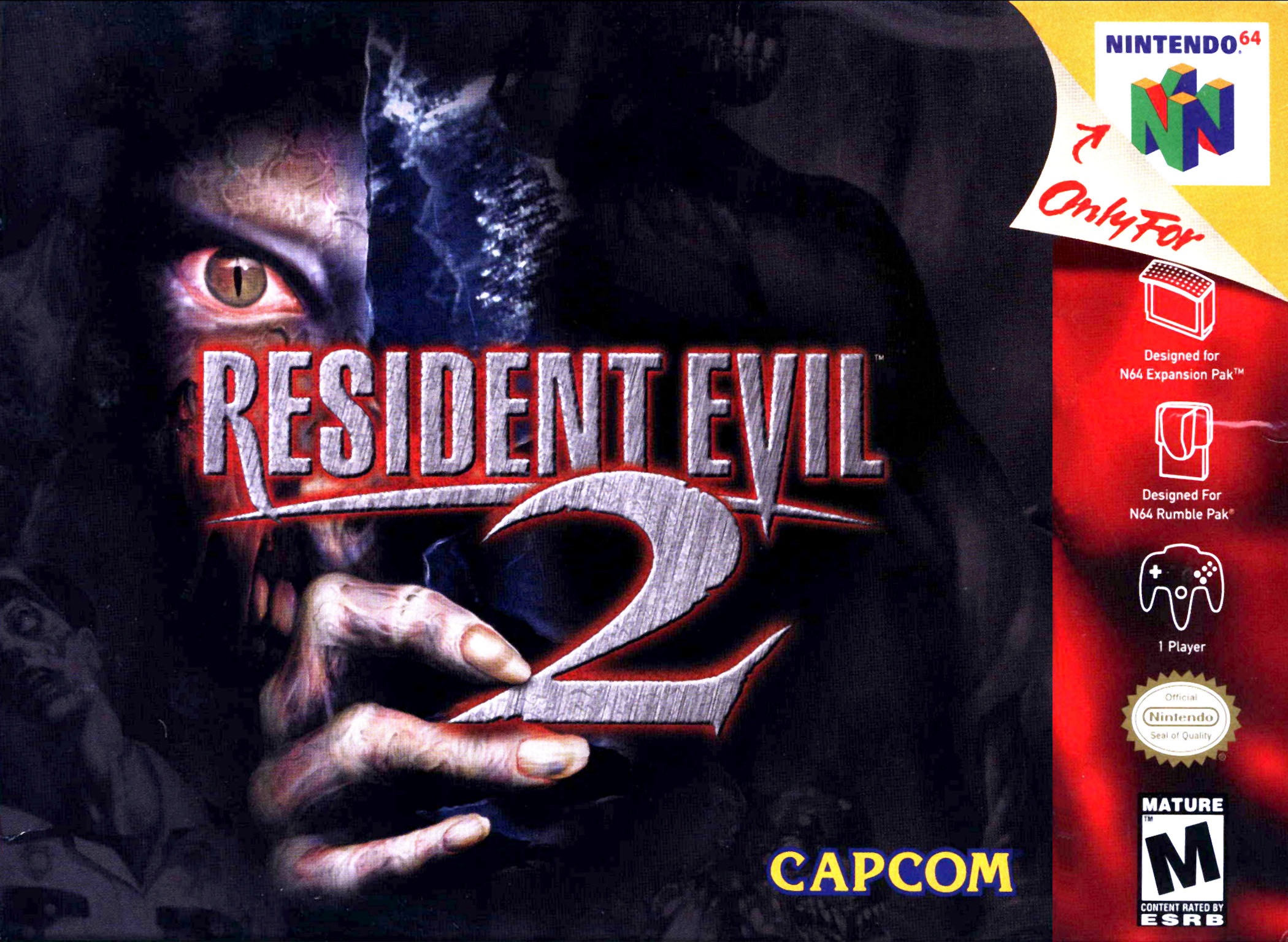
Some of my personal favorites have been in the form of Street Fighter. Particularly in the handheld market. Street Fighter on the go has always been an enticing proposition, and the fact that Capcom has made it work as well as they have over the years is all kinds of impressive. Note: The actual porting jobs here weren’t always done by Capcom, but I couldn’t resist the alliteration in the title.
Street Fighter II (Game Boy)
This port happened while Street Fighter II mania was still going strong, so porting the game to every console on the planet that could handle playing it in any form was something Capcom was all too keen on doing. The thing is, the Game Boy was nowhere near powerful enough to handle a functional port of the arcade juggernaut. Of course, the Game Boy was no stranger to barely functional ports, but the wizards at Capcom and developer Sun L managed to pull it off fairly respectably.
They adapted the 6-button layout to the Game Boy’s paltry 2 in a way that while nowhere near perfect actually functions to a reasonable degree, and graphics that read fairly well on the original hardware’s gloppy dot matrix screen. The game itself doesn’t exactly run silky smooth, but once you get playing, the framerate is a somewhat easy hurdle to overcome.

The music though is the real high point in this release. The iconic music of Street Fighter II was translated brilliantly to the Game Boy’s 8-bit style. Overall, it was Street Fighter II in your pocket, an incredibly enticing proposition back in those days. And the humble Game Boy managed to make it more or less a reality.
Street Fighter Alpha 3 (GBA)
Street Fighter Alpha 3 had been called “Street Fighter Perfection” before, and rightfully so. At the time, it was just about as good as Street Fighter could have been. The arcade game was a masterpiece, but it was the home conversions that really took things up a notch. New modes like Dramatic Battle, which allowed 2 players to gang up on a third, and a bevy of new and returning characters like Guile and his ridiculous hair, meant that playing Street Fighter Perfection at home was an even better experience than in its native land of arcades.
But for all the greatness of the PlayStation and Dreamcast versions of Alpha 3, one still can’t help but marvel at the wonder that is Street fighter Alpha 3 for Game Boy Advance.

With the exception of a handful of music tracks and a couple of stages, this is a near feature complete translation of Street Fighter Alpha 3 on a handheld that in no way should have been able to contain it. Thank the technical wizards at Crawfish Interactive for that one. Not only that, but it’s got three characters not found in the previous iterations, and we’re not talking about a couple of palate swaps like Juni and Juli either. Yun from Street Fighter III, Maki from Final Fight 2, and even Eagle from the original Street Fighter all make playable appearances in this game. Sure, it’s noticeably compressed in a lot of areas, but it plays like the real deal.
Almost equally impressive was the following version, Street Fighter Alpha 3 Max for PSP, which managed to stuff everything from all previous ports into a tiny UMD, but also included a couple of extra modes, and yet another additional character in the form of Ingrid from Capcom Fighting Evolution. Now if only someone would release an HD version of Alpha 3 Max on consoles.
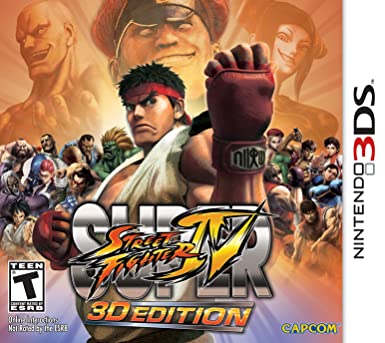
Street Fighter IV (Nintendo 3DS)
Meanwhile, here we have Super Street Fighter IV 3D Edition for Nintendo 3DS. What was then the current Street Fighter game on home consoles wasn’t exactly the most insane graphical powerhouse of all time, but it had fantastic art direction and was the first (real) polygonal Street Fighter game. Plus, the roster was pretty sizable.
So when they announced Street Fighter was coming to the brand new handheld 3DS, the best case scenario should have been a toned down port of the original Street Fighter IV, visually in line with how they handled the mobile port. There, they took the game’s characters and recorded their polygonal movements to create sprites. The whole look was actually pretty impressive overall, but that’s not what we saw on 3DS. Instead, we got the full polygonal experience, the full (at the time current) roster, every move, every costume, and very little in the way of compromise.
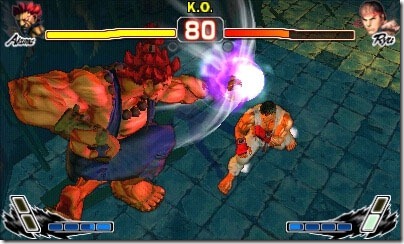
The backgrounds were where the game took the biggest hits, but that was a paltry price to pay for a handheld Street Fighter of this magnitude. They also added a new optional dramatic camera angle that showed off the system’s 3D effect, and allowed players to assign moves to easily accessible areas on the touch screen. So if performing complicated maneuvers like Zangief’s spinning piledriver was too difficult to do on a tiny 3DS, you can actually assign the entire move’s command to a single touch. Sure, this makes the game considerably easier to play, but it’s not like anyone was planning on using the 3DS port for pro-level tournaments or anything. As a fun way to play Street Fighter on the go, this was insanely good, and a really impressive thing to see on the small screen.
Street Fighter Alpha (Game Boy Color)
If you thought the work Crawfish did on Street Fighter Alpha 3 for GBA was impressive, it arguably pales in comparison to the technical marvel that is Street Fighter Alpha for Game Boy Color. Street Fighter II for Game Boy was very cool, but here we have a far more complex game running far better on hardware that’s barely more powerful than the OG Game Boy. Screen shots really don’t do the thing justice, and that’s because Crawfish smartly prioritized animation and movement over stand-still graphics. This resulted in a game that’s incredibly impressive in motion, especially on the original Game Boy Color’s screen. What’s more, it actually plays well too.
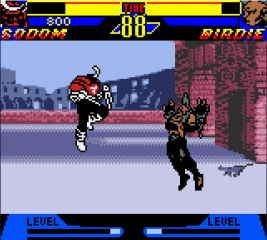
Mapping Street Fighter II to two buttons was tough enough, but in Alpha you have super moves to contend with as well. The fact that this game runs at all is a marvel, but that it’s actually a functionally comparable experience to its console and arcade brethren is nothing short of a miracle.
If you’ve never played this game, do yourself a favor and seek it out. If only to stare in awe at the technical wizardry that allowed this thing to exist at all.
As modern technology gets more advanced, feats of this magnitude are becoming a little harder to come by. Thankfully we still have folks like Panic Button working their magic on making more powerful games work on Switch, and of course there’s the indie and homebrew scene that continues to squeeze more and more power out of older generations of consoles.
What are your favorite feats of video game wizardry?
